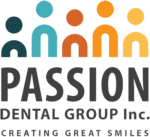Oral Hygiene in Grande Prairie
Adults over 35 end up losing more teeth to gum infection than they do from cavities. Periodontitis is a gum infection that hurts the soft tissue and bones that support your teeth. Over time, the infection can loosen your teeth or even lead to tooth loss.
Periodontitis is common — three out of four adults are affected at some point in their lives. Thankfully, it’s preventable through brushing, flossing and regular dental check-ups.
Gateway Dentistry Group is passionate about providing education to our patients about periodontitis and oral health in Grande Prairie. We offer professional dental cleaning, preventative dental care, children’s dental health services and periodontal maintenance for adults. Contact us today to book an appointment.
What Is Good Oral Hygiene?
Oral hygiene includes practices that keep your mouth clean and free of disease, infection and other dental issues. A good oral hygiene routine, such as daily brushing and flossing, can result in a mouth that looks and smells healthy. When you practice good oral hygiene, you may notice that:
- Your teeth are clean and debris-free.
- Your gums are pink-coloured and don’t bleed or hurt after cleaning.
- You do not consistently struggle with bad breath.
Keeping up with your oral hygiene through daily preventive care is one of the best things you can do for your gums and teeth. These healthy habits can help stop problems before they develop. Preventive care is also far less painful, expensive and stressful than treating oral health issues that have progressed. The dentists at Gateway Dentistry Group in Grande Prairie can help with oral hygiene tips, including sharing essential dental habits and pointing out areas that may require extra attention.
HOW TO BRUSH YOUR TEETH
Brushing your teeth is more complicated than you might think. To brush effectively, you need to find a soft-bristled brush that allows you to reach all areas of your mouth easily. Twice a day you should:
- Brush the outside surfaces of your teeth at a 45-degree angle from your gums. Carefully move the brush back and forth using short strokes the same length as your tooth.
- Repeat for the inside of your back teeth.
- Clean the inside of your upper and lower front teeth by holding the brush vertically and making up-and-down strokes.
- Brush the gum tissue around your mouth, your tongue and the roof of your mouth.
- Clean the biting surfaces of your teeth by changing the position of the brush to reach every single surface.
- Thoroughly rinse your teeth to remove any plaque that came loose while you brushed.
If you start following these brushing tips and feel any pain or have any additional questions about how to brush, call Gateway Dentistry Group, and we can help.
HOW TO FLOSS YOUR TEETH
Brushing isn’t the only way to ward off periodontitis. The disease gets between your teeth in the places where your toothbrush can’t reach. Flossing is one way to get plaque and other bacteria out of those surfaces, but you have to make sure you use the right technique.
Learning how to floss your teeth starts with following these steps:
- Use an 18-inch piece of waxed floss and wrap it around both of your middle fingers.
- Hold the floss between your thumbs and forefingers right before starting to floss.
- Use a gentle rubbing motion between your teeth, being careful not to snap the floss into your gums.
- When the floss reaches the bottom of the space between your teeth toward your gum line, curve it against one of your teeth. Then you can slowly slide the floss between your gum and tooth.
- Once you get there, hold the floss tightly against your tooth. Then gently rub the side of the tooth with the floss using up and down motions. Repeat this motion on the rest of your teeth, even the backside of the last tooth.
As you go along, use one middle finger to turn the floss to a clean side every time. Always throw floss away when you’re completely done with it, or it could just add bacteria to your mouth again. You should also rinse your mouth out with water to remove any plaque and food particles that got loose when you were flossing.
CARING FOR SENSITIVE TEETH
Whenever you get a professional dental cleaning or another dental service, you could feel some sensitivity to hot and cold. As long as you keep your mouth clean, the feeling of sensitivity shouldn’t last long, but ask your doctor or your dentist if the sensitive feeling lasts. There are varieties of medicated toothpaste and mouth rinses that can help take some of the sensitivity away.
Choosing Oral Hygiene Products
There are a wide variety of oral hygiene products available today. While many are helpful, it may become difficult to choose between products and understand exactly what you need to keep your oral hygiene at its best. Here are a few of the products that work for most of our patients:
- Electric toothbrushes: These toothbrushes are safe and effective for most of our patients. Powered toothbrushes can help people who have arthritis or those with oral conditions clean hard-to-reach tooth spaces. You still need to use the correct brushing techniques, though, instead of simply relying solely on the toothbrush.
- Oral irrigators: These water spraying devices use a stream of water that removes plaque and food debris from between your teeth and below the gum line. You should brush and floss along with the oral irrigator for the most significant benefit.
- Special toothbrushes: Some toothbrushes come with a rubber tip on the handle that you can use to massage your gums after brushing, and others have small brushes to help you clean between your teeth. While these tools are helpful, make sure you talk to your dentist at Gateway Dentistry Group for any tips on how to properly use the products.
- Fluoride toothbrushes and mouth rinses: Professional dental cleaning often includes a fluoride treatment, so why not use it at home? Fluoride toothpaste and mouth rinses help with tooth decay and are an easy way to floss and brush more effectively. For more information on fluoride, check out this guide from the Alberta Dental Association & College.
PROFESSIONAL CLEANING
Brushing and flossing are only one part of the oral hygiene equation. A professional dental cleaning helps remove plaque in spots you might miss with your toothbrush or floss. Gateway Dentistry Group offers numerous dental hygiene services in Grande Prairie. When you visit, we can help you prevent gum disease and offer oral hygiene tips.
Nutrition
How Diet Affects the Health of Your Teeth
Certain foods are known to be more harmful to your oral health. When sugary or starchy foods stick to your teeth, they serve as a meal for naturally occurring bacteria, encouraging them to grow. Foods high in acid can contribute to enamel erosion. While brushing your teeth can help remove sugar and acid, limiting how much of these types of food you eat can prevent oral health issues.
FOODS TO AVOID
Ultimately, sugar is not good for your teeth. Starchy foods such as crackers, bread, cookies and candy introduce more sugars in your mouth for bacteria to feed on — which can destroy tooth enamel and cause decay.
Frequent snacking between meals can also increase your risk of tooth decay. Most snack foods, such as raisins, cookies and pastries, are higher in sugar and dissolve slowly. Eating these types of foods increases the amount of time teeth are exposed to the harmful effects of sugar. Also, your mouth produces less saliva while snacking than at mealtime. Saliva neutralizes tooth-damaging acids that continue to harm your teeth long after you’ve finished eating.
FOODS THAT WON’T HARM YOUR TEETH
Instead of eating snacks high in sugar or starch, try nuts, cheese, onions and certain teas that can slow down the growth of tooth decay. Also, dairy products and other foods high in calcium are essential for forming and maintaining healthy bones and teeth.
Other foods that are better for your overall oral health include:
- Crunchy fruits and vegetables to work out your jaw.
- Plain yogurt or cottage cheese.
- Hard-boiled eggs.
- Nuts and seeds.
- Melba toast.
- Salad.
BEVERAGES
What you choose to drink is just as important to your dental hygiene as what you eat. Soda, alcoholic beverages, coffee, sports drinks and other beverages high in sugar, flavour and acid can erode tooth enamel and contribute to tooth decay. Try limiting these drinks to mealtime.
Water is the best beverage for your overall health, including good oral health. Try drinking water after every meal or after consuming sugary or acidic foods and beverages. This can help wash away harmful ingredients from your teeth, neutralizing some of their negative effects between teeth cleanings.
CONTACT GATEWAY DENTISTRY GROUP
If you are looking for a dentist committed to oral health in Grande Prairie, talk to Gateway Dentistry Group. Contact us today to schedule a professional dental cleaning.



